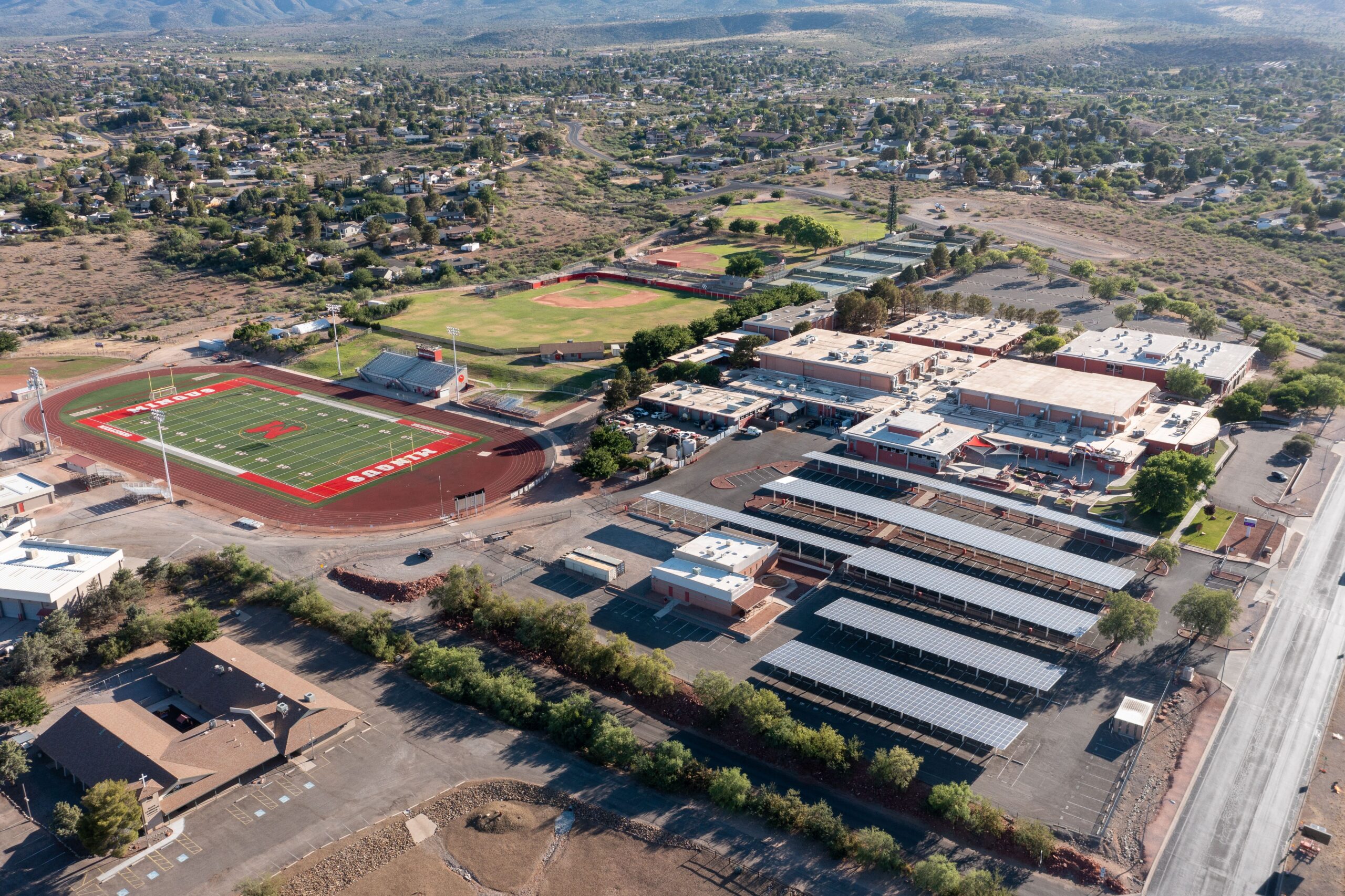Representatives from Verde Valley cities and towns, Sedona and Cornville gathered in Clarkdale on Thursday, Aug. 25, to seek consensus in response to the Yavapai County Board of Supervisors’ Aug. 22 redistricting decision.
Local officials also discussed ways they might persuade the Arizona Independent Redistricting Commission to draw new congressional and legislative districts favorable to their interests.
Yavapai County Supervisor Districts
After roughly five months of public comment on four alternative maps proposed to redraw supervisor districts in Yavapai County, Yavapai County Board of Supervisors voted 2-1 in favor of a fifth map, Alternate Map A, after a public hearing Aug. 22.
District 1 Supervisor Carol Springer and District 2 Supervisor Tom Thurman voted in favor of Alternate Map A. District 3 Supervisor Chip Davis, who favored Map C, voted against.
Alternate Map A, a redistricting map drawn by Springer and Thurman, was not circulated for public comment during the previous five months in which 76 public meetings were held to discuss county redistricting maps.
Several officials at the intergovernmental meeting Aug. 25 decried the board’s split decision as antidemocratic, intended only to protect political power bases for Springer and Thurman in Prescott and Prescott Valley.
Thurman, who cast the deciding vote in favor of Alternate Map A, reportedly told Cottonwood Mayor Diane Joens and Clarkdale Vice Mayor Richard Dehnert, “‘I’m sorry for throwing the Verde Valley under the bus,’” Dehnert said.
Thurman allegedly made the remark during a meeting of the Northern Arizona Council of Governments on Aug. 23, Dehnert said.
‘“I’ll be campaigning in Camp Verde next year,”’ Thurman reportedly told Dehnert.
 “Good luck. We’ll be waiting for him,” Camp Verde Town Councilwoman Jackie Baker said, responding to Dehnert’s report of the conversation.
“Good luck. We’ll be waiting for him,” Camp Verde Town Councilwoman Jackie Baker said, responding to Dehnert’s report of the conversation.
By the end of the intergovernmental meeting, local officials appeared to agree individual residents should write the U.S. Department of Justice to protest the Yavapai County Board of Supervisors’ Aug. 22 decision.
A majority of the intergovernmental group did not appear to embrace a proposal by Sedona Mayor Rob Adams urging each city and town to consult with legal counsel about a possible joint legal challenge to the Board of Supervisors’ decision.
Davis, who said such a challenge was unlikely to prevail, urged officials to instead encourage constituents to file individual written protests with the U.S. Department of Justice
“Why would we file a challenge we are not likely to win?” Clarkdale Town Councilman Bill Regner asked.
“Because we can,” Cornville Community Association President Deanna King said, winning nods of approval from a few of the officials at the table.
The group applauded Davis for his “integrity and ethics” in advocating on behalf of Map C in the best interests of the Verde Valley.
State and Congressional Districts
Local officials also discussed their preferences for new congressional and legislative districts to be drawn by the Arizona Independent Redistricting Committee, also known as the IRC.
Though no votes were taken, the majority of officials appeared to agree on at least two points:
- Outlying areas of Arizona should be represented in the U.S. House of Representatives by two rural congressional districts.
- New boundaries for Arizona House of Representatives and Senate seats should be drawn to keep Camp Verde, Cottonwood, Clarkdale and Sedona intact and in a single legislative district.
A spirited discussion about whether Yavapai County should become its own single legislative district did not find consensus.
Davis argued a single county district would benefit the Verde Valley to the extent the two representatives and one senator to be elected from the district will be better able to represent the interests of the entire county.
Clarkdale Town Councilman Bill Regner argued both representatives and the senator that would be elected from a single Yavapai County legislative district will undoubtedly come from Prescott and Prescott Valley, where roughly 66 percent of the county’s population resides, once again leaving the Verde Valley without a representative at the Arizona Capitol.
Under the IRC’s current proposed boundary map, Yavapai County is divided into four state legislative districts, three of which intersect in Camp Verde.
Dehnert argued this would, in effect, give Camp Verde a chance to elect six representatives and three senators from the town’s three legislative districts and give the Verde Valley greater representation in the Legislature than a single county district.
Joens argued that however the new legislative districts are drawn, the Verde Valley should be included in the same legislative district as Flagstaff because the Verde Valley has more shared interests with Flagstaff than it does with Prescott, including a tourist economy, law enforcement and health care.
Janet Regner, a Clarkdale resident hired to advise Coconino County on redistricting, said whatever action the communities decide to take, written comments need to be sent to the IRC before Friday, Sept. 2, to have any impact.
The commission already established two base maps, known as Grid Map Option No. 2, for new legislative and congressional districts. As required by law, the commission will spend the next three weeks revising the base maps to take into account redistricting criteria required by the U.S. Constitution, Regner said.
Because all Arizona redistricting decisions are subject to scrutiny by the U.S. Department of Justice, the independent commission’s primary mission will be to ensure the new maps comply with the federal Voting Rights Act.
Only after Voting Rights Act requirements are satisfied will the commission consider other factors like competitiveness, contiguousness, compactness, communities of interest and existing geographical boundaries, Regner said.


